It’s difficult to conceive that Valium addiction was once the most pressing drug epidemic in the United States. From the 60s to the 80s, Valium was the most prescribed drug, selling billions of pills a year. Valium belongs to a class of drugs called benzodiazepines, or benzos for short, and is also known as diazepam, its generic name. Benzos are still a popular prescription as a sedative due to their calming effects, which make them useful in treating conditions such as anxiety, insomnia, seizures, and muscle spasms.
The issue with Valium attaining widespread use is that it is highly addictive, more so than many other drugs. Users report an enduring sense of peace and a mild euphoria as if suddenly liberated from life’s problems. Physical and psychological dependence can follow. Couple this with the fact that Valium tolerance builds up very quickly, and the full picture of Valium’s danger becomes clear. It is a habit-forming pill that quickly builds resistance and has many dangerous side effects when misused, including overdose.
Benzodiazepine misuse is on the rise in the United States. At GateHouse Treatment, we believe it is important to recognize the signs of abuse within yourself or in a loved one. Because of this, it’s important to know what Valium is, where it came from, and what it can lead to. The following article will contain everything you need to know about Valium addiction and abuse.
1. What is Valium?
To cope with life’s difficulties, people in mid-20th century America turned en masse to barbiturates. Barbiturates are sedatives with limited therapeutic use; their effects are very harsh, and their chance of misuse is high. Taking too many could stop breathing, and when combined with alcohol, they have a high risk of being fatal. Barbiturate overdose, most famously, was Marilyn Monroe’s cause of death.
Valium was first developed in the 1960s by the Swiss pharmaceutical company Hoffman-La Roche. It was their second brand of benzodiazepines and more potent than the previous. The drug was designed to be a less problematic alternative to barbiturates and became a smashing success.
Valium, and other sedatives, were heavily marketed as cures for life’s stresses. Particularly targeted were women, and by 1968, Valium was the best-selling drug in the United States. Two years prior, the Rolling Stones released a song titled Mother’s Little Helper with the lyrics:
“Mother needs something today to calm her down
And though she’s not really ill, there’s a little yellow pill
She goes running for the shelter of her mother’s little helper
And it helps her on her way, gets her through her busy day”
Throughout the 70s, as Valium sales peaked at 2.3 billion pills in a year, people woke up to the fact that it wasn’t as innocent as advertised. The pill acted on the brain’s GABA receptors, affecting the body’s response to anxiety and fear. Valium slowed the transmission of messages in the body, and severe side effects began to show. In the 1980s, the United States government created guidelines and classifications for Valium that made physicians less likely to prescribe them, ending a 20-year history of rampant abuse.
2. Therapeutic Effects of Valium
Valium became part of a therapy regimen for anxiety disorders such as generalized anxiety disorder (GAD) and panic disorder. It also treats muscle spasms and seizures due to its soothing effect, reducing frequency and intensity. The prescription also combats the negative effects of alcohol withdrawal, which can cause agitation and tremors in the body’s processes.
3. Harmful Effects of Valium Addiction
Valium addiction comes with a host of troublesome symptoms. Here are some of the ones worth highlighting.
- Since Valium is habit-forming, addiction risks dependence. Unable to function socially or professionally without the drug, they will increase the dose, legally by doctor shopping for an increased prescription or illegally buying it on the street. Unregulated street pills have no quality control and can contain illegal substances in obscene quantities that lead to death.
- Long-term abuse causes memory loss and cognitive impairment as the nervous system becomes used to existing in a sedated form.
- Valium can also cause muscle weakness and ataxia, a loss of muscle control, making it difficult to perform simple tasks, such as picking up a pencil or holding a cup. In severe cases, it can cause respiratory depression, which can be life-threatening.
- Drowsiness is a common side effect, which is dangerous when driving a car or working with heavy machinery. Dizziness, blurred vision, and poor coordination are dangerous things to live with daily.
- The liver metabolizes Valium, and its long-term use can harm the organ. It can also cause kidney damage.
There is also the problem of withdrawal. Valium withdrawal occurs when an individual who has been using the medication for an extended period abruptly stops or reduces the dose. Withdrawal symptoms can range from mild to severe, occurring within hours to days after the last dose.
Common symptoms include anxiety, irritability, insomnia, sweating, tremors, nausea, vomiting, diarrhea, rapid heartbeat, hallucinations, seizures, and psychosis. The severity and duration of withdrawal symptoms depend on various factors, including the dosage, duration of use, and unique circumstances such as age, health status, and co-occurring mental health disorders.
Valium withdrawal can be dangerous, and professionals recommend medical supervision for individuals trying to quit the medication. Treatment for Valium withdrawal typically involves a gradual tapering off from the medication, along with supportive care to manage withdrawal symptoms.
4. Valium Abuse and Overdose
It is difficult to suffer a fatal overdose of Valium. Even at 1,000 times the recommended dose of the drug, it is generally not fatal (although the addict will fall deeply ill and damage their organs). However, it is not unheard of. The symptoms of a Valium overdose include respiratory depression, severe drowsiness, confusion, muscle weakness, and loss of consciousness.
The real danger of Valium addiction comes from mixing it with other drugs. Since sustaining an addiction requires uptake every few hours, it is very common that an addict will drink alcohol while taking large quantities of Valium. Both alcohol and Valium are central nervous system depressants, slowing down brain activity. When taken together, their effects amplify, leading to a potentially life-threatening situation. Look out for the following symptoms of cross-drug overdose:
- Extreme drowsiness or fatigue
- Confusion or impaired coordination
- Slurred speech or difficulty speaking
- Impaired vision
- Muscle weakness
- Low pulse
- Blue Lips
- Respiratory depression (slow, shallow breathing)
GateHouse Treatment and Valium Abuse
When you are ready to start your recovery journey, we are here to help with personalized, top-of-the line care. GateHouse Treatment offers partial hospitalization programs, outpatient support, intensive outpatient care, and other innovative forms of therapy, all with an eye on holistic wellness. In addition to managing symptoms, we pride ourselves on treating the person and establishing the foundation for a lifetime of health and happiness.
Don’t hesitate to call us at (855) 448-3588 for a free consultation or reach out on our website.
- Cymbalta Withdrawal: Causes, Symptoms, And Management - October 12, 2023
- Boredom in Recovery: 5 Tips to Avoid Relapse - October 6, 2023
- Overconfidence and Rehab: Avoiding Relapse - October 4, 2023




